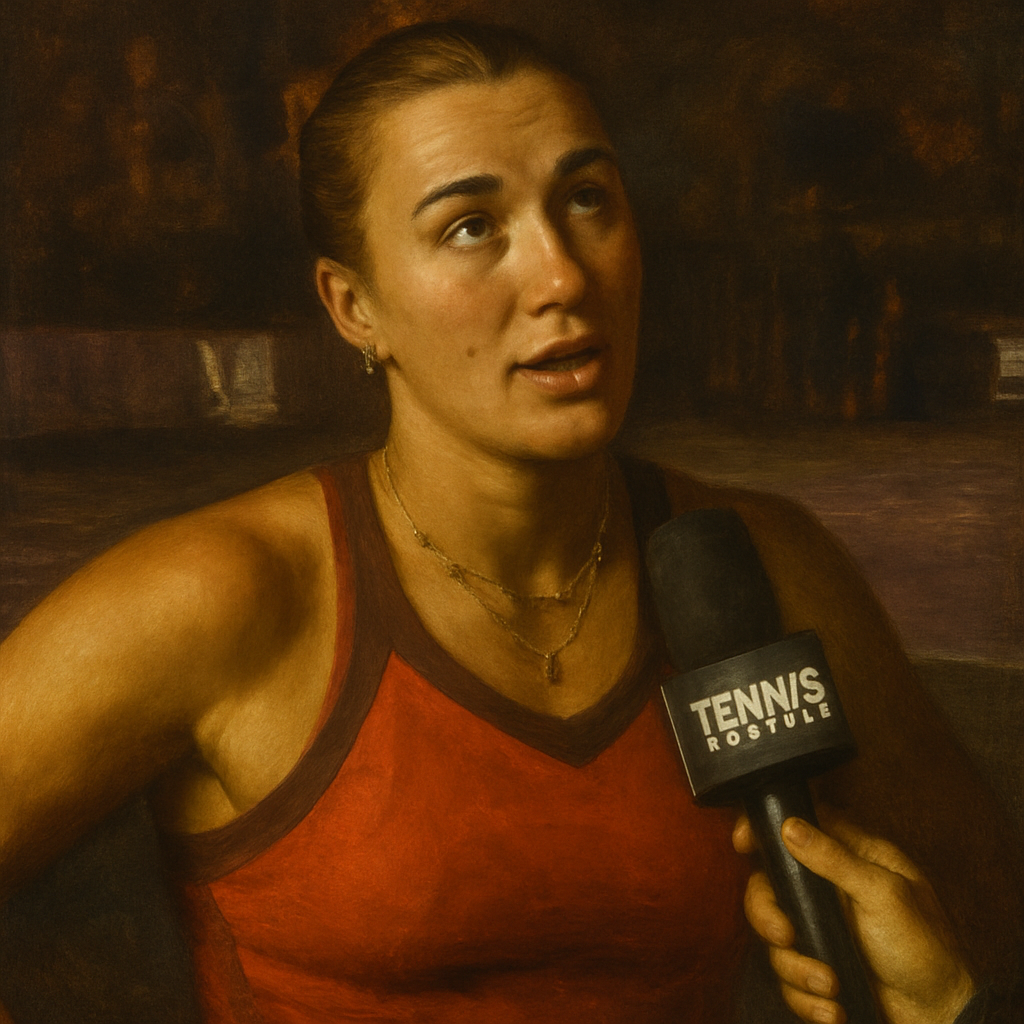NEW YORK — In a dramatic and emotionally charged moment at the 2024 US Open, World No. 2 Aryna Sabalenka found herself navigating a high-stakes third-round match not only against her opponent but also through the sudden and public departure of her coach, Anton Dubrov, from her player's box. The incident, which occurred during her tense 6-1, 6-7(5), 6-4 victory over Frenchwoman Clara Burel, sent shockwaves through Arthur Ashe Stadium and sparked a flurry of speculation and concern.
A Sudden Exit and a Surge of Anger
The pivotal moment came after Sabalenka, who had dominated the first set, faltered in the second-set tiebreak. As the match leveled at one set apiece, cameras captured Dubrov gathering his belongings and walking out of the stadium, leaving Sabalenka's box conspicuously empty at the start of the deciding set. The Belarusian powerhouse later confessed that her initial reaction was one of pure frustration. "I got really angry," Sabalenka admitted in her post-match press conference, her candor cutting through the usual sports clichés.
She elaborated on the emotional whiplash of the situation, explaining that the anger, while intense, was ultimately channeled into a fierce determination to win on her own terms. "I was like, 'Oh my God, what are you doing? Like, why did you leave?' And then I thought, 'OK, I will show you that I can fight without you, I can win this match without you, and I will just show you that it's not about you.'" This internal monologue highlights the complex athlete-coach dynamic, where support can sometimes feel like a prerequisite for success, and its absence can be interpreted as a profound test of self-reliance.
Clarifying the Reasons Behind the Walkout
Contrary to initial assumptions of a heated disagreement or a coaching rift, Sabalenka was quick to clarify the context behind Dubrov's exit. She revealed that it was a pre-arranged tactical decision, not a spontaneous act of abandonment. "He left because we had this plan," she stated, aiming to quell the brewing storm of rumors.
The plan, according to Sabalenka, was for Dubrov to observe the match from a different perspective if she began to struggle. The logic was that a change in vantage point could provide fresh insights. "If I'm going to start struggling, he's just going to leave and watch from the TV to see what's going on, because from the box it's sometimes different," she explained. This strategic move, while unconventional, is not entirely unheard of in high-performance sports, where coaches sometimes seek a broader or different view of the court to diagnose issues with footwork, positioning, or tactical patterns that are less apparent from court-level.
Sabalenka emphasized that the decision was a collaborative one, born from a desire to problem-solve during a moment of crisis in the match. The key takeaways from their pre-match agreement were:
- The exit was a planned tactical maneuver, not a personal reaction.
- The goal was to gain a new perspective on the match from a television broadcast.
Navigating the Pressure of a Grand Slam
The incident underscores the immense psychological pressure athletes face at major tournaments. Sabalenka, as the second seed and a recent Australian Open champion, carries the weight of expectation into every match. The US Open, with its boisterous New York crowds and relentless media scrutiny, amplifies this pressure exponentially. To have her primary support figure visibly exit at a critical juncture added an unexpected and very public layer of mental adversity.
Tennis, as an individual sport, often becomes a brutal test of mental fortitude. Players are alone on the court with their thoughts, frustrations, and fears. The player's box is not just a seating area; it is a lifeline, a visual anchor of support and belief. When that anchor is suddenly removed, it can either cripple a player or, as in Sabalenka's case, ignite a defiant fire. Her ability to reframe the situation from one of betrayal to one of motivation speaks volumes about her growth as a competitor.
A Pattern of Emotional Honesty
This is not the first time Sabalenka has been remarkably transparent about her emotional state during competition. She has frequently discussed her struggles with self-doubt and the high-stakes "drama" that unfolds in her head during tight matches. This vulnerability has endeared her to fans and made her one of the most relatable top athletes on tour. Her confession of anger followed by a determined resolution is consistent with her persona—a fiercely competitive player who is still navigating the psychological demands of the sport at the very highest level.
In her own words, reflecting on the mental battle, Sabalenka has previously said, "I keep saying that this is another challenge. I have to go through this, I have to learn, I have to accept that sometimes I will be crazy on court, and that's okay." This philosophy of accepting her emotions, rather than suppressing them, was on full display during the match against Burel.
The Path Forward and Team Dynamics
Despite the dramatic mid-match departure, Sabalenka affirmed the strength of her relationship with Dubrov and the rest of her team. She made it clear that there was no underlying conflict and that the decision, however it appeared, was made with the singular goal of winning the match. "There is no drama," she insisted, labeling the online speculation as nothing more than a "funny situation."
Her performance following the walkout was a testament to her resilience. She regrouped, broke Burel's serve early in the third set, and closed out the victory with the power and precision that has defined her career. The match served as a powerful reminder that while coaches provide strategy and support, the ultimate battle is fought within the player herself. Sabalenka proved she could not only survive but thrive when her primary safety net was, quite literally, walked away. The incident, while jarring, may ultimately be remembered as a key moment in Sabalenka's continued evolution into a mentally unshakable champion, capable of winning even when left to her own devices.

